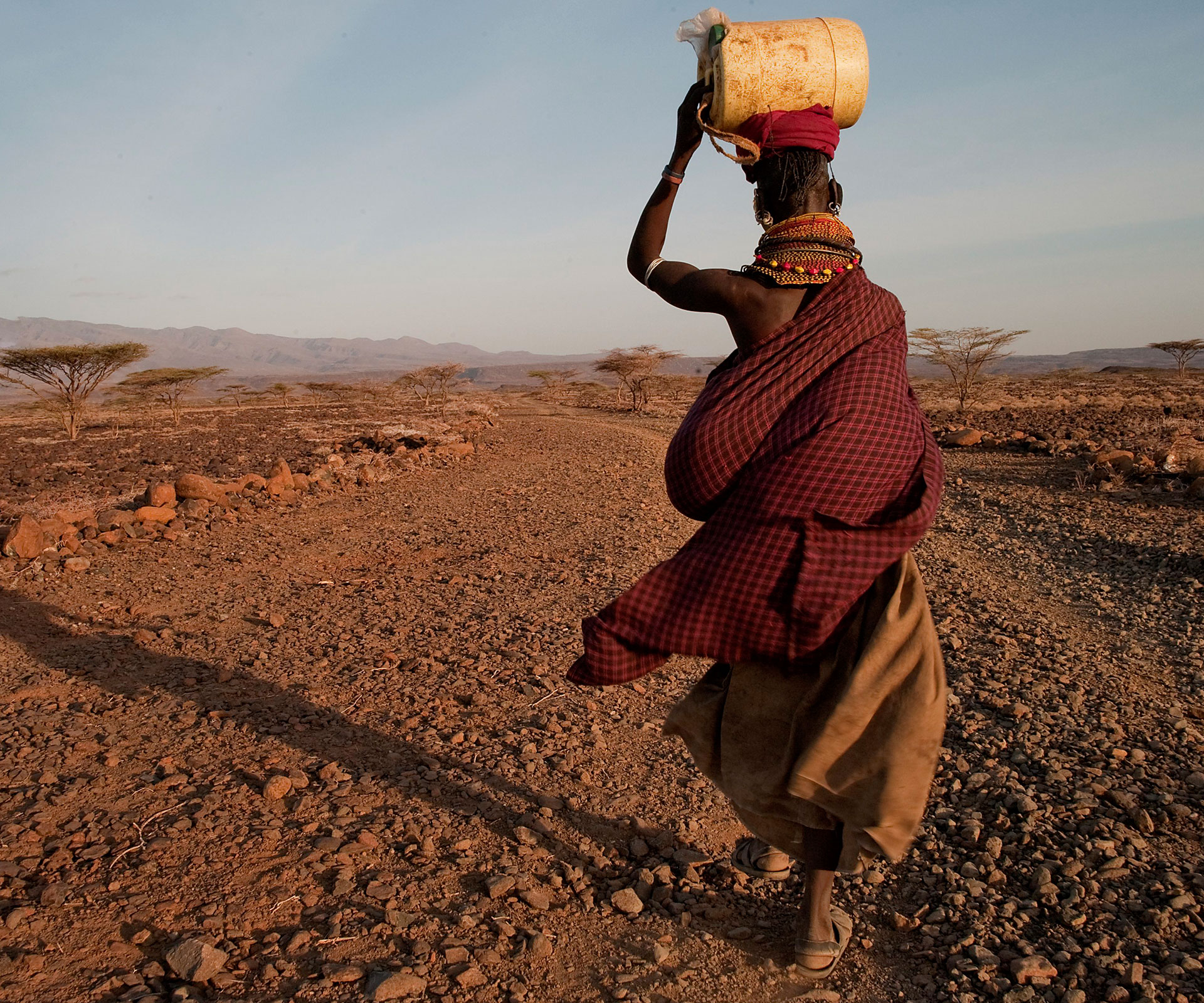Today, in the village of Nduru, the community is celebrating their new ODF status. In the stifling afternoon heat, the villagers congregate under a jacaranda tree, schoolgirls rap and health workers sing about personal hygiene, gyrating and ululating. Some of the women are in their finest chiffon and sequins, while others wear T-shirts that say, ‘My Village is Open Defecation Free’.
To an outsider, the event may seem absurd, but latrines have transformed the villagers’ lives, especially the women’s.
Grandmother Alice Ndolo takes us to her property, where 12 family members live in three mud huts. Life was a struggle, she says, before she learned about sanitation and set an example for her village, building a latrine four years ago. “We just used to survive,” says Alice, 48. “We had a lot of diarrhoea and there were a lot of flies. We didn’t understand the relationship between the flies, our food and our health.”
Diarrhoea regularly spread through the school and children would miss more than a week of classes with each infection. Meanwhile, mothers would have the worry of nursing them.
Without latrines, menstruation was also an issue. Girls would stay away from school every month, and after giving birth, it was arduous for women to deal with the bleeding. “After delivery, women used so much energy digging holes to bury the rags, they would have a lot of pain,” says Alice’s daughter-in-law, Millicent Achieng Onyango. “Now we throw the rags away and continue with life.”
For women, who have to walk into secluded areas to relieve themselves, often under the cover of darkness, danger can lurk in the form of snakes or lions, as well as predatory men. (Last year, in India, for example, two teenage girls were allegedly gang-raped and hanged from a tree after they walked into a field at night because they didn’t have a toilet at home.)
It’s no surprise that it’s the women pushing for change, but it’s the men – the traditional heads of the households – who have to be convinced.

Clockwise from far left: Alice Ndolo and her latrine; Magdaline Amolo Aloo; students learn about hygiene.
In Luala Kaor village, mother of four Caroline Auma does not yet have a latrine. There is a striking difference – in pride and cleanliness – between Nduru and this non-ODF village. Outside Caroline’s mud hut, the yard is littered with plastic bags, old clothes and broken plates. Last month, her 14-month-old baby had diarrhoea for three weeks and almost died.
“Women know that the latrine is important,” says Caroline, 28, who walks for two hours every day to fetch water, “but the husband has to decide.”
It was only recently that her husband came around. He was struck with diarrhoea himself – and finally decided to start construction.
Siaya is Barack Obama’s ancestral homeland, and the President of the United States looms large. Our hotel has the Barack Obama Ballroom (no bigger than a dining room, with a collapsed ceiling), we drive by the ‘Official Barack Obama Bus Stop’ and there has been a rash of baby boys named after him. The President’s 94-year-old step-grandmother, ‘Mama Sarah’ Obama, is a local celebrity.
For the children, he is a potent symbol of possibility – a reminder that they can emerge from poverty, perhaps even lead the Free World – but first they need an education. That’s difficult enough with scant resources, but add the risk of disease and the dream must often feel beyond reach.
In Siaya, more children die of preventable illnesses such as diarrhoea than in any other region of Kenya, but change is on the way.
As her father-in-law shows off the family latrine, 21-year-old Mildred Achieng ponders a brighter future for her toddler. “Children can grow and complete their schooling,” she says. “They used to die early, but now they can live and be happy.”
Words by Susan Horsburgh
Photos by Shravan Vidyarthi and Getty Images

